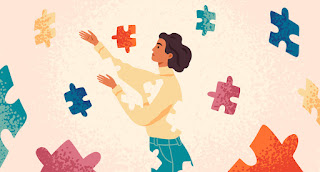How to Maximize the Benefits of Self-Help Resources
How to Maximize the Benefits of Self-Help Resources
Self-help is a thriving business. It provides much-needed assistance to people dealing with everything from closet chaos to serious mental illness. While self-help can help people heal, improve their relationships, and solve personal problems, it is sometimes marketed in ways that leave you with the impression that you are defective in some ways and fall short of a standard.
Being strategic in how you use self-help resources can help you reduce this negative effect and get the most benefit out of them. Begin by acknowledging that the resources exist precisely because many other people are experiencing similar problems. By itself, this can help you feel better.
Then, rather than comparing yourself to others, turn your attention to your inner experience. Consider how you perceive yourself and how you feel about yourself. Are you preoccupied with what's wrong with you and what you "should" be like? Are you evaluating yourself in the same way you would a used car, kicking the tyres and looking for dents and other flaws that reduce your value? If that's the case, you've got a serious problem on your hands. Viewing yourself as a broken thing has the serious drawback of making you both think of yourself as a flawed object and feel fundamentally flawed.
Instead, try to see yourself as a person like everyone else; as someone with flaws and flaws who makes mistakes. From this vantage point, rather than attempting to "fix" yourself, it makes more sense to consider how you want to grow and heal. Even as you consider ways you'd like to be different in the future, you can more easily recognise the inherent value of simply being you in the moment. An important side effect of being more accepting of yourself is that you will feel more at ease in relationships, without the nagging feeling that you do not belong.
You can begin to feel better by addressing your issues, whether they are depression, insecurity in relationships, excessive drinking, or anything else. Connect with this awareness on the inside by paying attention to your fears and negative self-perceptions, for example. Then take a step back. Relate to your inner experiences in the same way that you would relate to someone else who is going through similar difficulties. Feel my pain. Allow yourself to feel both sadness and compassion for your problem, as well as a desire to alleviate your own pain.
Then, using self-help resources, you can solve problems, make changes, and foster healing. However, it is critical that you keep their advice in context, as a way to direct your personal growth rather than to fix your brokenness. There is no embarrassment involved. Rather, you will experience yourself as a person with difficulties, just as everyone does. From this vantage point, your self-help materials can help you move compassionately toward the changes you want to see in yourself – as well as help you feel more connected to other people.
If you have any questions or concerns about this video, please write them down beforehand.
If you enjoyed the video, please give it a thumbs up and share it with your friends.
Subscribe to the channel to get notified about the new upcoming videos !

Comments
Post a Comment